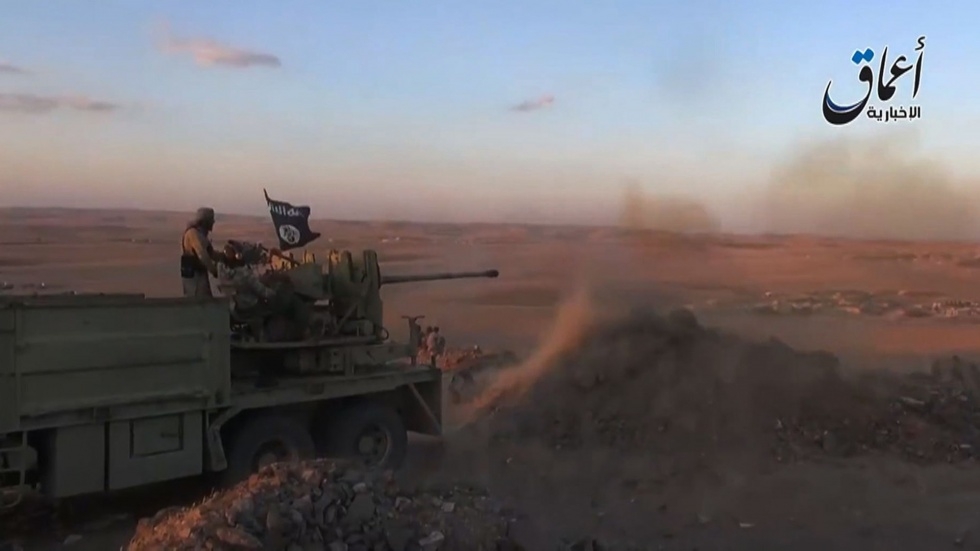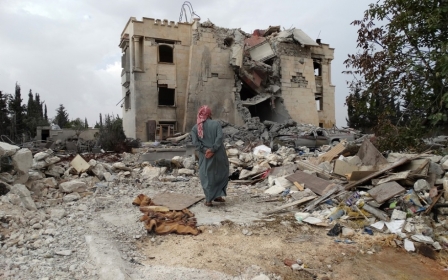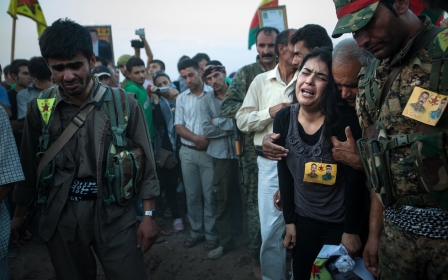Kobane faces its end amid mounting Kurdish anger

On Friday evening, as media attention in London and other Western capitals was mostly concentrated on the politics of building up the international coalition against Islamic State (IS), attention inside Turkey and the region around it was fixed on the fate of a small town on the Syrian-Turkish border.
Ain al-Arab, as it is known in Arabic, or Kobane in Kurdish, is one of three Kurdish-controlled enclaves along the Turkish border in Syria. It was at Kobane that a Syrian Kurdish state called Rojava (“West” in Kurdish) was proclaimed in July 2012. Now a series of desperate cries for help from its defenders indicates that the town is on the point of falling to IS, which already controls a long swath of land to its east, including the Tel Abyad/Akcakale crossing point into Turkey.
During the past two weeks, IS forces have taken over the surrounding countryside and hills. Though they are said to possess tanks and armoured vehicles, much of the fighting on both sides seems to be carried out by gunmen out in the open, firing heavy weaponry at each other. The fighting is so close to Turkey that not only can its sounds be heard from the other side of the border, but people along it can watch the conflict with the naked eye.
Just what strategic objective IS has in mind by closing in on Kobane is not immediately obvious, but it has devoted an enormous amount of effort to winning this part of the border. For over a year it has been fighting a war of attrition against the Kurdish population in the borderlands.
The Kurds are led by the PYD (Democratic Union Party), an offshoot of the PKK - the Kurdish separatist group fighting in Turkey since 1984 - with the actual fighting being done by the PYG militia (Popular Protection Units). The Kurdish Regional Government in Erbil and its Peshmerga have no influence here.
During the summer of 2013, the defenders posed for defiant photographs evidently intended to win over public opinion in Turkey and elicit a more sympathetic response from Turkish forces along the border. But if that was the intention, it failed.
Ankara seems to have taken the view that the IS was clearing out PKK militants from its border. Kurds in northern Syria and also in Turkey believe that the Turkish government has not only failed to protect them but that it has been ferrying supplies to help IS in northern Syria. They point to truck convoys run by the Turkish secret service and caught by zealous border guards earlier this year but later released.
Turkey denies the allegations, saying the trucks were carrying humanitarian relief supplies and slapped a court ban on reporting the incidents.
In the past week, IS forces have drawn ever closer to Kobane, moving from 23 kilometers away, to the outskirts of the town. As a result, an estimated 130,000 Syrian Kurds fled for refuge into Turkey. Others have not gone because they are farmers and cannot get permission to bring their livestock with them, so it is difficult to say how many people are now left inside Kobane. Some estimates run as high as several hundred thousand, though these are probably on the high side: before the Syrian civil war started, it had 44,000 inhabitants.
On Friday and Saturday, there was briefly a trickle of refugees returning to Kobane because of the conditions they were facing in Turkey. Many, however, seem to have returned to Turkey after only a few hours back in the town.
The assumption among the Syrian Kurds is that once the city falls, there will be a wholesale massacre of its remaining population. This fear is bolstered by claims from IS soldiers on other fronts that they do not regard Kurds (who are like themselves Hanefi Sunnis) as Muslims but infidels - whom they fight and slaughter.
Kurdish appeals for help for Kobane have been going out for several days, with demonstrations in several Western cities and personal appeals to President Barack Obama and other leaders to follow the precedents of Amirli, where US air strikes helped break encirclement by IS forces at the beginning of the month, and the strikes last month on Mount Sinjar which rescued stranded Yazidis.
The Mount Sinjar operation gained massive international publicity, perhaps because it was backed by the Erbil government. Kobane’s plight has not attracted similar attention outside Turkey, presumably because the Kurds there are PKK-backed and the PKK is listed as a terrorist organisation by the US and other governments.
Speaking to CNN on 26 September, a US official explained that the US government had an “incomplete picture” of the situation at Kobane and was “discussing what we can do with our coalition partners”, a remark taken as a reference to Turkey, whose contribution so far has been limited to taking in refugees.
That may be changing. During Friday night and early Saturday, Heron unmanned reconnaissance planes flew over Kobane, and there were reports (disputed by some observers) of a few air-strikes against IS positions to the south of the town. So far these strikes have not been confirmed by American sources. Some observers believe that Kobane will be allowed to fall to IS so that it can then be liberated from it.
Indignant at being apparently abandoned by Turkey, the PKK last night launched their first attack for 16 months against Turkish forces in southeastern Turkey, killing three special duty policemen. The ceasefire and peace process with the Kurds - the proudest achievement of Turkey’s ruling Justice and Development Party - seems to be tottering. If Kobane falls and there is a massacre, the peace process may not survive.
In Ankara there is also talk of sending Turkish ground forces into Syria to restore order, perhaps in the form of hot-pursuit operations, perhaps on a longer scale. Turkey is determined that the Bashar al-Assad government must be brought down along with IS and wants to see a buffer zone and a no-fly zone created. How Syrian Kurds and Arabs would respond to such an initiative can only be conjectured as yet.
On 2 October, Turkey’s intentions will become clearer when parliament votes on special military powers for the government. Meanwhile, barring a miracle, time is running out for Kobane and its inhabitants, and the world is still looking the other way.
- David Barchard has worked in Turkey as a journalist, consultant, and university teacher. He writes regularly on Turkish society, politics, and history, and is currently finishing a book on the Ottoman Empire in the 19th century.
The views expressed in this article belong to the author and do not necessarily reflect the editorial policy of Middle East Eye.
Photo Credit: An image grab taken from a video released by Aamaq News, a Youtube channel which posts videos from the areas under the Islamic State (IS) group's control (AFP)
New MEE newsletter: Jerusalem Dispatch
Sign up to get the latest insights and analysis on Israel-Palestine, alongside Turkey Unpacked and other MEE newsletters
Middle East Eye delivers independent and unrivalled coverage and analysis of the Middle East, North Africa and beyond. To learn more about republishing this content and the associated fees, please fill out this form. More about MEE can be found here.




